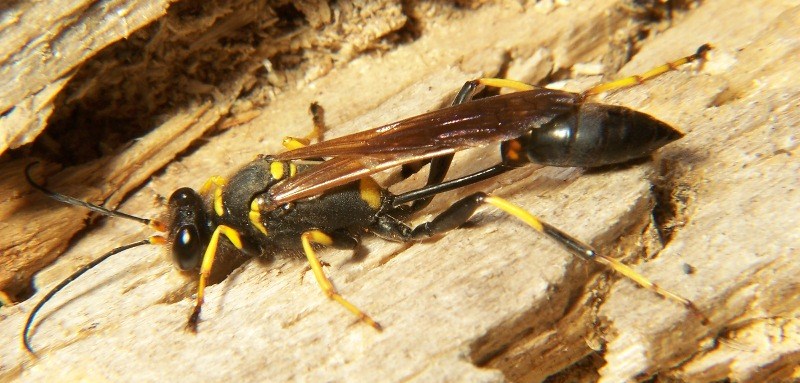References
Bartlett, T. <URL: http://bugguide.net/node/view/6610>. Accessed 26 March 2012.
Blackledge, T.A. and K.M. Pickett. 2000. Predatory interactions between mud-dauber wasps (hymenoptera, sphecidae) and Argiope (araneae, araneidae) in capacity. Journal of Arachnology 28:211-216.
BugFacts.net. <URL:
http://www.bugfacts.net/mud-
Dunn, G.A. 1996. Insects of the Great Lakes region. The University of Michigan Press, Ann Arbor, Michigan, USA.
Eberhard, W. The predatory behavior of two wasps, Agenoideus humilis (pompilidae) and Sceliphron caementarium (sphecidae), on the orb weaving spider Araneus cornutus (araneidae).
Encyclopedia of Life. <URL: http://eol.org/>. Accessed 26 March 2012.
Hickman, C.P., L.S. Roberts, S.L. Keen, A. Larson and D.J. Eisenhour. 2009 Animal diversity: 5th edition. McGraw-Hill, New York, New York, USA.
Fink, T., V. Ramalingman, J. Seiner, N. Skals and D. Streett. 2007. Buzz digging and buzz plastering in the black-and-yellow mud dauber wasp, Sceliphron caementarium (Drury). Journal of Acoustical Society of America 122: 2947-2948.
Kulzer, L. 1996. Order hymenoptera, family sphecidae. <URL:http://crawford.
Polidori, C. M. Federici, C. Pesarini and F. Andrietti. 2007. Factors affecting spider prey selection by Sceliphron mud-dauber wasps (hymenoptera: sphecidae) in northern Italy. Animal Biology 57:11-28.
Poulsen, M., D.C. Oh, J. Clardy, and C. Cameron. 2011. Chemical
analyses of wasp-associated
Streptomyces bacteria reveal a prolific potential for natural
products discovery. PLOS ONE 7(2).
Resh, V. H. and R. T. Carde, editors. 2003. Encyclopedia of insects. Academic Press, San Diego, California, USA.
The Black and Yellow Mud Dauber. <URL:
http://crawford.tardigrade.
Uma, D.B. 2010. Behavioral ecology of wasp-spider interactions: the role of webs, chemicals and deception. Georgetown University Library.
Uma, D.B. and M.R. Weiss. Chemical mediation of prey recognition by spider-hunting wasps. 2010. Ethology 116:85-95.
University of Iowa Entomology. <URL:
http://bugguide.net/node/view/
